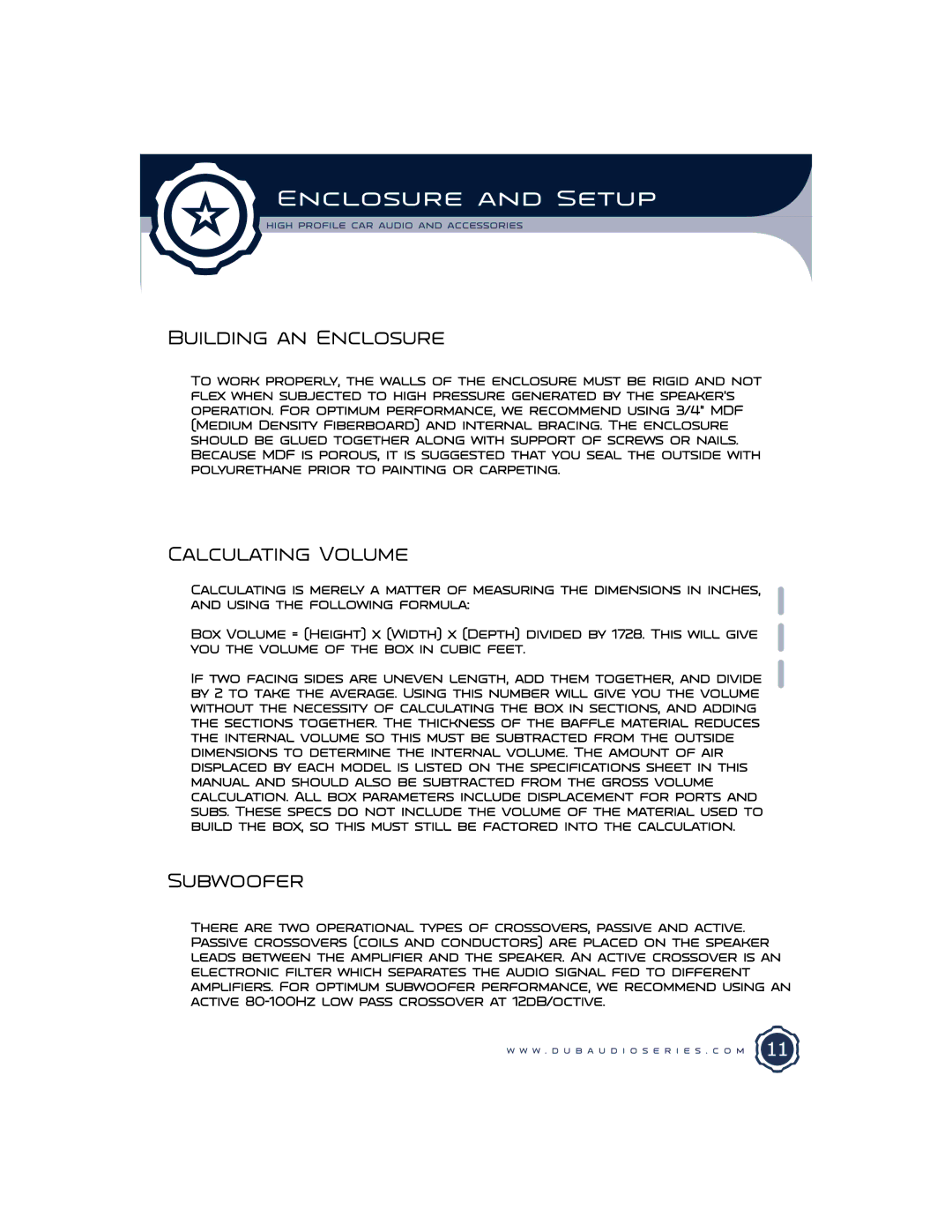DUB1200, DUB1000, DUB1500 specifications
AudioBahn is renowned for creating high-performance car audio equipment, and their series of subwoofers, including the DUB1500, DUB1000, and DUB1200, are prime examples of this commitment. Each model is designed to deliver exceptional sound quality, powerful bass, and reliable performance, making them popular choices among audiophiles and casual listeners alike.The AudioBahn DUB1500 stands out with its impressive power handling capabilities, boasting a peak power of 1500 watts. This subwoofer is engineered with a dual voice coil design, which allows for flexible wiring options and improved sound performance. The DUB1500 also features a durable cast aluminum frame that minimizes vibration and improves the overall sound quality. Its advanced cooling system ensures that the subwoofer remains cool during prolonged use, preventing overheating and potential damage. The combination of a heavy-duty rubber surround and a reinforced paper cone ensures that the DUB1500 can handle rigorous audio demands while producing deep, rich bass tones.
Moving to the AudioBahn DUB1000, this model offers a balanced combination of power and efficiency. With a peak power handling of 1000 watts, the DUB1000 is designed for those who seek deep bass without sacrificing clarity. The innovative design includes a polypropylene cone and a robust rubber surround, enhancing both durability and acoustic performance. One of the standout features of the DUB1000 is its vented pole design, which allows for improved airflow, reducing distortion and enhancing sound quality. This model is well-suited for smaller vehicles while still delivering impressive bass response.
Lastly, the AudioBahn DUB1200 strikes a perfect balance between the DUB1500 and DUB1000, offering a peak power of 1200 watts. This subwoofer features a unique triple stack magnet structure that maximizes magnetic force, leading to superior bass output. The DUB1200 also incorporates a foam surround that provides greater excursion and linearity, allowing it to produce powerful lows while maintaining overall sound clarity. The included chrome-plated terminals add a touch of style and provide a secure electrical connection.
All three models feature AudioBahn's signature aesthetic, showcasing a striking design that adds a visually appealing element to any audio setup. With their robust build quality, advanced technologies, and impressive sound performance, the AudioBahn DUB series remains a top choice for those eager to upgrade their car audio experience.

